Canada-Japan Military Relations: Shaky Past, Uncertain Future?
1 September 2022
“And here we are, a mere six weeks late, with our most basic assumptions about geopolitics since shattered by the Russian invasion of Ukraine. Will NATO’s “counter-pivot” back to Europe prove the end of the unprecedented Canada-Japan collaboration of the 2018-19 period, just one more episodic Canadian commitment to the region?”
This blog has been prepared on the basis of lecture recorded for the 13th Japan Canada Academic Consortium Student Forum“Japan-Canada Peace and Security Cooperation in the Asia/Indo-Pacific”. The conference was held online from 18 to 25 February 2022 and was hosted by the Keiko and Charles Belair Centre for East Asian Studies, Renison University College, University of Waterloo, in cooperation with the Prince Takamado Japan Centre Teaching and Research, University of Alberta.
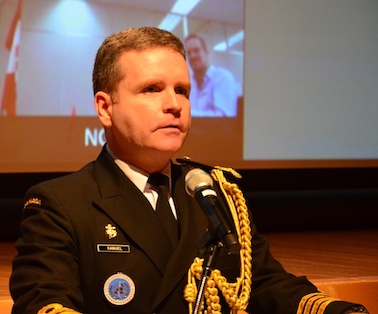
I had the great privilege two months ago of addressing virtually the participants of the 13th Japan Canada Academic Consortium Student Forum, which theme this year was focused on “Japan-Canada Peace and Security Cooperation in the Asia/Indo-Pacific.” I have since been invited to share the text of my address for posting to the conference website. It gives me great pleasure to do so here, with the additional opportunity to provide, after the main text, some additional thoughts on the impact in the Asia/Indo-Pacific region of the Russian invasion of Ukraine, launched just as the JACAC forum was taking place.
Note that my original address is edited slightly for brevity and clarity. The opinions expressed therein are my own and do not represent the views and policies of the Government of Canada nor that of the Canadian Armed Forces. Japanese personalities are referred to in the Japanese custom – surname first, given name second.
As serving officer in the Royal Canadian Navy, I am currently employed in the Embassy of Canada as the Canadian Defence Attaché to Japan. In this role since 2018, I have had the privilege to occupy a front-row view of the rapidly evolving dynamic of peace and security cooperation between our two countries in recent years.
So what’s behind my less than inspiring title for this presentation – Canada-Japan Military Relations: Shaky Past, Uncertain Future, followed by a rather ominous question mark. Well, for those who have read my earlier article included in your reading list (http://www.journal.forces.gc.ca/PDFs/CMJ221Ep23.pdf), you will recall that I divided the history of military relations between our two countries in three phases – from that of reluctant allies brought together by the Anglo-Japanese Alliance of 1902, to that of distant enemies who drifted apart during the 1920s and 30s and eventually went to war in 1941, to that of partners with common interests. The latter phase started soon after the demise of the Japanese empire in 1945, built up into the Cold War and continues to evolve today.
Perhaps the one common thread that persisted through these successive and contrasting periods is the episodic nature of the relationship. As allies, our military forces crossed path on some occasions during the First World War and during the Siberian Intervention but they never acted in a truly coordinated manner. Canada quickly and decidedly declared war on Japan in the evening of December 7th 1941, on the very day of the Japanese attack against Pearl Harbor. And yet Canadian forces only played a minor role in the Pacific as our focus remained squarely aimed at Europe and it is only in the winter of 1944-45 that dedicated planning started in Ottawa to mount a large expeditionary force for dispatch to the Pacific after Germany’s defeat. And then that contingency was swept away by the atomic bombs and the surrender of Japan in August 1945. And the end to the conflict was promptly followed by a polite refusal on the part of Ottawa to join the allied force being dispatched to occupy the Japanese islands, as the Canadian government was already focussed by that stage on the immediate demobilization of its armed forces.
The episodic nature of the military relationship continued from the dawn of the Cold War to well past the fall of the Berlin Wall, even though both countries were solidly anchored in the anti-Soviet camp. Admittedly, the Canadian Armed Forces (CAF) maintained their focus on the defense of North America and the larger North Atlantic/Western European theatre through those years for valid reasons. The defence of Canada has always been and will always remain the most important task assigned to the CAF. And, if not going all the way back to the 1940 Ogdensburg Agreement, at least since the 1958 establishment of NORAD (first known as the North American Air Defense Command and now the North American Aerospace Defense Command), the bilateral commitment with the United States to continental defence is another mission that has not and will not go away. And of course, our military commitment to NATO (the North Atlantic Treaty Organisation) very much drove CAF commitments overseas during those decades.
By and large, all this made much sense under the tenets of the Cold War. The primary threat to Canada were Soviet bombers and missiles bringing nuclear Armageddon across the North Pole and the main conventional threat to our allies was that of the Red Army marching across the Iron Curtain to conquer the whole of Western Europe.
Meanwhile, if the hostilities broke out, Canada’s Pacific back door would be covered by the US Navy, which would turn the Pacific into an American lake by sweeping away the Soviet fleet and smashing the ground and air forces based in the Far East of the USSR. And behind this American spear would lay the shield formed by the three arms of the Japan Self-Defense Forces – the JSDF being composed the Ground Self-Defense Force (GSDF), the Maritime Self-Defense Force (MSDF) and the Air Self-Defense Force (ASDF) – all three services formed to defend the Japanese islands and the US bases hosted on Japanese soil.
The time allocated for my discussion does not allow me to go there in details but one must admit that not all was well with the Cold War JSDF, developed as they were under the pacifist constitution of 1947 while bearing an imperial legacy that weighed heavily on them, often impeding the formulation of a cogent and evolved military strategy. Indeed, each arm of the JSDF developed an advanced level of interoperability with their American sister service under the aegis of the Japan-US Alliance. This very close relationship between sister services perhaps verged on the unhealthy, leading Professor Garren Mulloy to conclude in his book Defenders of Japan that “… the services essentially planned three different Cold War scenarios with only the slightest reference between them.”
Ironically, there was some parallel there with the Cold War Canadian Forces, which were also quite siloed, more interested in working with their allied services than jointly together. The army prepared to fight a conventional war on the plains of Europe at the side of the NATO armies, the navy was all set to replay the Battle of the Atlantic in coordination with the US and British fleets, while the air force would take on the Soviet Bear bombers flying across the Canadian Artic within the bilateral construct of NORAD. And yet there the similarities between the CAF and the JSDF stopped as our Cold War relationship remained very much episodic in its nature. Our respective forces would bump into each other on occasional multinational exercises, most often those hosted by the United States such as the biannual maritime exercise RIMPAC in Hawaii, and our ships would conduct port visits in each other’s country, usually on the way to somewhere else rather than as an actual bilateral commitment. Nevertheless, it must also be acknowledged that each such opportunity for interaction between the CAF and the JSDF were highly valued on the Canadian side as we were always very impressed by the tactical acumen and professional excellence displayed by our Japanese counterparts as well as the quality of their equipment.
The end of the Cold War could have constituted an opportunity for a rapprochement between our forces. In Canada, the 1994 White Paper on Defence (https://publications.gc.ca/collections/collection_2012/dn-nd/D3-6-1994-eng.pdf) was one of many government policy documents that underlined at that pivotal juncture the importance of the Asia-Pacific to Canada’s future prosperity and security. At the same time, the JSDF made their first steps on the international scene with the deployment of a naval minesweeping force to the Persian Gulf in the wake of the 1990 Iraqi invasion of Kuwait, and a first involvement in a UN peacekeeping mission, deploying to Cambodia in 1992. This just as Canadian forces were also operating in those same areas at the time. And yet unforeseen and repeated crisis in the Balkans and Africa kept the CAF focus away from the Pacific and Asia throughout the 1990s... And then Afghanistan nearly consumed all Canadian military efforts throughout the decade that followed the dramatic events of 9/11.
Nevertheless, even as the CAF were still heavily invested in a violent counterinsurgency campaign in Kandahar Province, the government of Prime Minister Stephen Harper made a new approach to Japan in 2010, which was welcome by then Prime Minister Kan Naoto. The two leaders released an unprecedented Joint Declaration on Political, Peace and Security Cooperation (https://www.canada.ca/en/news/archive/2010/11/2010-canada-japan-joint-declaration-political-peace-security-cooperation.html). This important statement gave rise to a flurry of activities, starting with the first ever Canada-Japan Political, Peace and Security Subcabinet Dialogue in 2011. This initiative was meant to launch regular meetings between the Japanese vice ministers and Canadian deputy ministers for foreign affairs and defence – hence the reference to 2+2 meetings. This was a serious signal of the growing importance placed by both countries on the bilateral relationship. The question for Canada, though, was whether this was just another episodic pivot to the Pacific, reflective of a shaky tradition between the two countries, or indeed an unprecedented moment laying a long-enduring foundation for an effective and credible commitment by Ottawa to the relationship with Japan.
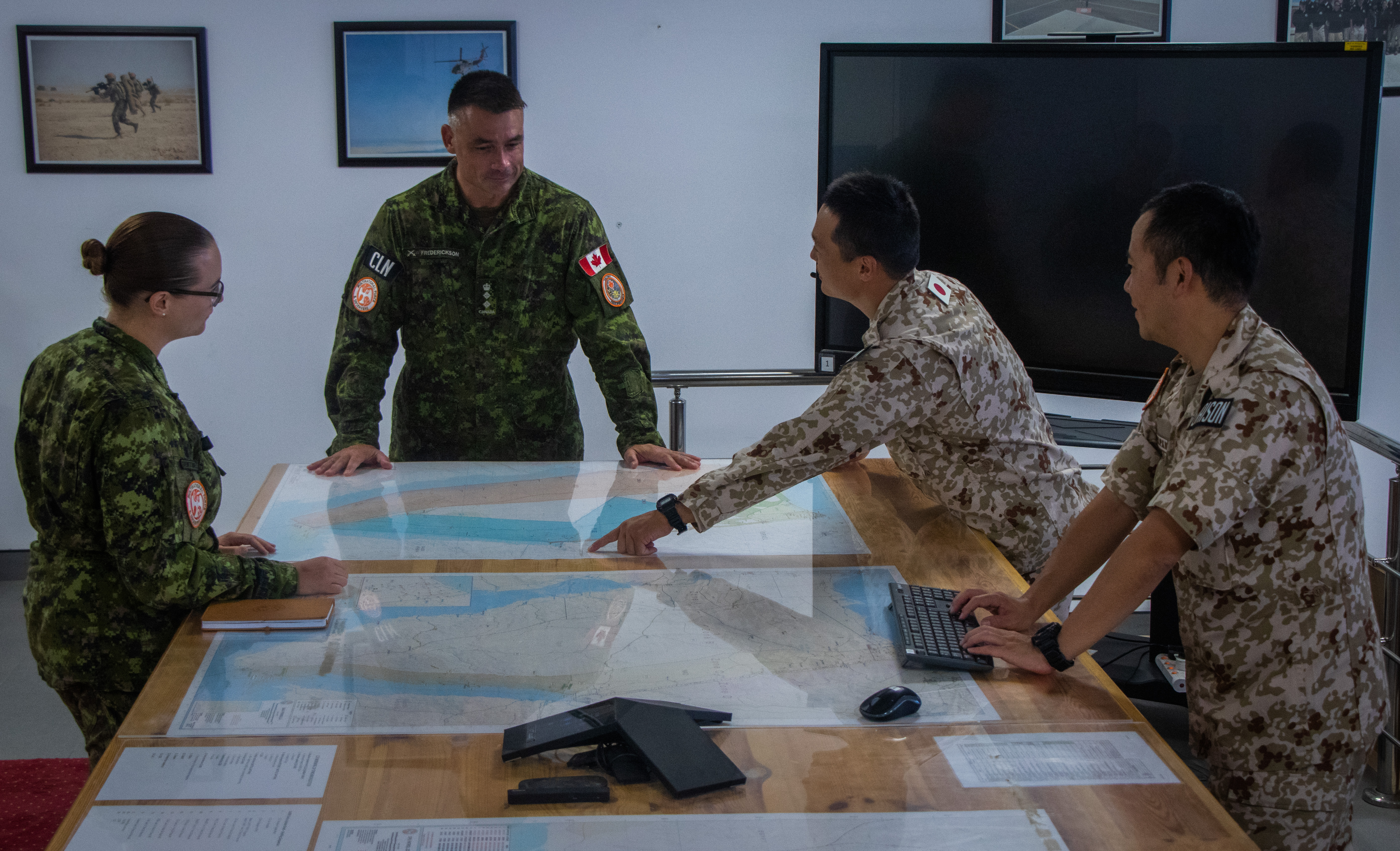
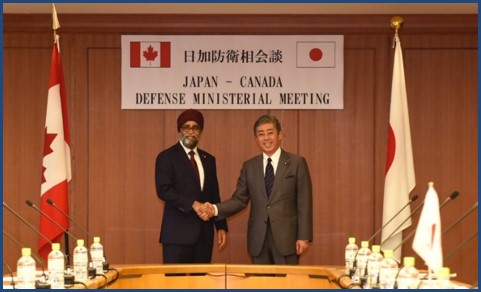
Admittedly, the outbreak of the COVID pandemic in early 2020 did interrupt many in-person activities between our forces, such as staff talks and the attendance of officers on each others’ professional courses. And yet virtual means were quickly put to use to remedy this challenge as political figures and military leaders at the strategic level strove to maintain close and personal relations across the Pacific. At the tactical level, following a short pause in Spring 2020 to assess the impact of the pandemic on the conduct of operations overseas, the dispatch of Canadian ships and aircraft to Northeast Asia resumed in the fall. An important priority was indeed to continue making an active and effective contribution to the surveillance mission in support of United Nations sanctions against North Korea’s missile and nuclear programmes. This contribution is known as Operation Neon in Canada and takes place within the framework of a multinational mission to which Canada and Japan, among others, have been contributing ever since it was stood up in 2018 (https://www.canada.ca/en/department-national-defence/services/operations/military-operations/current-operations/operation-neon.html). This effort continues today with three Canadian officers working on the staff of the Enforcement Coordination Cell, the international headquarters hosted in Yokosuka which coordinates the employment of various assets provided by contributing nations to patrol waters in the region, including Canadian frigates and CP-140 maritime patrol aircraft.
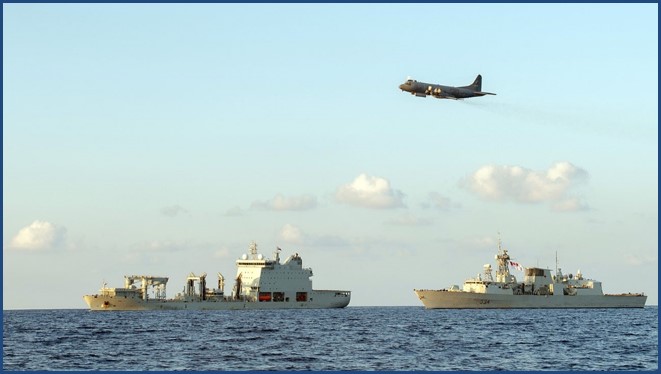
Investment in the relationship also continued at higher levels. In May 2021, then-foreign ministers Marc Garneau and Motegi Toshimitsu jointly announced Six Shared Priorities contributing to a free and open Indo-Pacific, six priorities that Canada and Japan would pursue together (https://www.canada.ca/en/global-affairs/news/2021/05/shared-canada-japan-priorities-contributing-to-a-free-and-open-indopacific-region.html). These are the rule of law, security, global health, energy, trade and climate change – most of those including some form of a defense and/or security dimension. Newly appointed Minister of National Defence Anita Anand and Minister of Defence Kishi Nobuo held a virtual introductory call in early December while Prime Ministers Justin Trudeau and Kishida Fumio have already interacted on several occasions, including in-person engagements during the COP26 meeting in Great Britain in November 2021 and on the margins of the G7 meeting in Brussels in March 2022. CAF planners are also hard at work this spring, elaborating plans for follow-on ships and aircraft deployments to Japan later this year. Again the focus of operations will be the UN sanctions surveillance mission and the opportunity to conduct exercises with the forces of like-minded partners in the Indo-Pacific, including the JSDF of course.
And yet… I am aware that doubts remain in the minds of many observers as to the Canadian long-term commitment to making a credible, effective and enduring contribution to peace and security in the Indo-Pacific in general, as well as to enlarging the bilateral defence and security relationship with Japan. Many a time academics and other analysts – be they Canadian, Japanese or from other like-minded nations – expressed a sincere concern that the flurry of activities in 2018-19 might just have been another short-lived burst of hyperactive commitment that will be followed by another trough in the years ahead, reflective of our long tradition of episodic engagements.
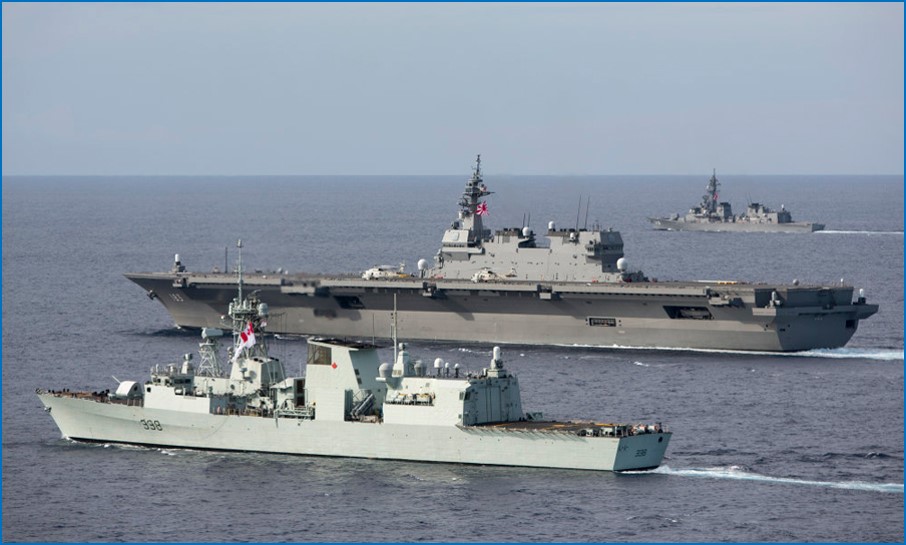
Of course, it is not my place to commit the Government of Canada to a particular policy. What I can do for the purpose of this forum, as it is concerned with Canada-Japan peace and security cooperation in the Indo-Pacific, is bring up some options that may be of use during your group work. And of course these are options that deal with the military dimension only as I will leave other dimensions of security issues in the 21st century to more qualified lecturers. Once again I am not recommending any specific course of action here, and I am not saying that they must be given priority over other non-military security means, I am merely offering military options that may warrant further reflection within the course of your discussions.
I group these courses of action into four dimensions. Those are:
1. Formal agreements;
2. Military-to-military exchanges;
3. Joint operations; and
4. A permanently forward-deployed presence.
Let’s commence with the formal agreements. It is often difficult for Canadians to fully understand the profound meaning and integral value to Japan of its single alliance with the United States. It is difficult for us Canadians to understand as there is no alliance we do not wish to join, there is no table we do not wish to have a seat at when it comes to international relations. Our political and military leaders, as well as our senior diplomats, all rose in an environment of overlapping and criss-crossing multinational defence and security arrangements that stand in dramatic contrast to the Indo-Pacific region, where the bilateral defence treaty is king. Case in point, Japan has only one ally formally committed to its defence, the United States. The sanctity of this single alliance is obviously of the upmost importance for Japan and its leaders will do their best to preserve this singular defence relationship. Nevertheless, it is also understood that the Indo-Pacific, just as many other regions in the world, has fragmented at the dawn of the 21st century and Japan is actively reaching out to a wide range of like-minded partners in a variety of ways when it comes to defence and security, and this trend has only accelerated since the adoption of the Free and Open Indo-Pacific vision (https://www.mod.go.jp/en/publ/pamphlets/pdf/indo_pacific/indo_pacific_e_2021.pdf).
So much so that a pattern of agreements has emerged, where Japan will not seek a formal defence alliance with anybody else than the United States but will engage in negotiating a succession of technical agreements with key partners. Australia is probably the furthest along that path, having achieved the following milestones in a set order. First came ACSA, the Acquisition and Cross-Servicing Agreement that facilitates the exchange of fuel, parts, and other goods and services directly between the two military forces. This is a great first step that allows them to exercise and work together, leveraging such support when accessing each other’s bases, and providing material assistance to each other when deployed away from home – as when a Japanese replenishment vessel provides fuel, food and parts directly to an Australian frigate while they are both deployed off Hawaii for RIMPAC for example.
Next was the Information Sharing Agreement, an ISA, which can also be referred to as a General Security of Information Agreement (GSOIA). Such agreements can have many dimensions beyond the military component, such as extending in the realm of Intellectual Property to facilitate commercial agreements dealing with sensitive technology transfers for example. More specific to the military realm, however, this agreement is critical to facilitate the exchange of classified information – essential for two militaries wishing to discuss intelligence products, create common doctrine and tactical procedures, as well as other elements of warfare that cannot be discussed in an unclassified forum.
And, most recently, the Australian and Japanese prime ministers signed an unprecedented Reciprocal Access Agreement (the RAA). This is the first status of forces agreement the Government of Japan has signed with any country other than the United States, with the important difference of being reciprocal, unlike the US-Japan SOFA. This agreement will facilitate deployments, joint exercises and operations, and the basing of forces between the two countries by establishing procedures for a mutual approach in facilitating the entry of troops into each country and their access to local military facilities, mundane issues such as the administration of taxes and import duties, and more fundamental concepts such as legal status of one’s troops when deployed in the other country.
So, while none of these agreements formally commit a signatory to the other’s defence, this trifecta of technical arrangements can make a huge difference in facilitating greater inter-operability and mutual support between military forces deployed on operations. Several of Japan’s like-minded partners have signed ACSAs and ISAs with Tokyo in recent years, while Great Britain and France have already indicated an interest in pursuing the Australian precedent set with the RAA. Canada concluded the ACSA with Japan in 2018 (http://www.ilajapan.org/jyil/components/treaties/2019/1-7_Canada.pdf). ISA and, in the longer-term, RAA, may both warrant consideration by Canadian and Japanese authorities if they wish to elevate the military relationship to the next level.
Also key to interoperability between two foreign militaries is developing greater mutual understanding between the two forces – bet it in terms doctrine, concepts and tactics, familiarisation with each other equipment and weapons, as well as a comprehension of each other’s culture, society and traditions. This level of mutual understanding can only be achieved through the development and sustainment of long-lasting personal relationships at the individual level. The CAF has a long tradition of sending, and hosting, numerous exchange and liaison officers with the forces of allied and partner countries as well as swapping officers on career course and professional development venues. Such exchanges have begun between the CAF and the JSDF but score more possibilities could be explored between the services, especially once the pandemic is resolved and person-to-person exchanges can be resumed more fully.
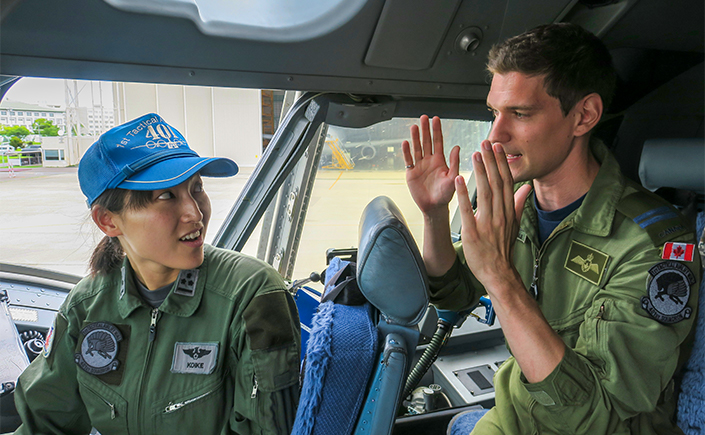
As mentioned previously, CAF and JSDF units and personnel already have a mature tradition of training together on a variety of bilateral and multinational exercises. Of all the services, the two navies have cumulated the deepest level of cooperation when deployed on bilateral exercises off our respective coasts, taking part in very challenging Japan-US maritime exercises here in Northeast Asia, as well as even more advanced multinational exercises, from RIMPAC off Hawaii to Talisman Saber off Australia. A logical next step would be to deploy and operate together to achieve mutual objectives as laid out in our respective foreign policies. A combined naval force made up of ships and aircraft from two countries deploying together to navigate through contested waters make for a potent message of political will when confronting disruptors of the rules-based order. As importantly, and in a much less confrontational manner, strategic messaging of support can be most effective when such a combined force joins the navy of a local like-minded partner to conduct exercises at sea and/or combined visits to a local base where both partners can engage in capacity-building activities, the usual round of defence diplomacy engagements, etc.
Which, in turn, leads to the fourth type of activity that may warrant consideration, that of forward-deploying military assets to maintain a permanent presence in the Indo-Pacific. Forward-deployment refers to the capacity to maintain forces in a given region on a permanent basis, or at least for an extended period of time. Canada’s current approach is to deploy ships and aircraft regularly in order to maintain a repeated, persistent presence in the Indo-Pacific but forward-deployment seeks to make this presence nearly permanent by rotating ships/aircraft/crews so as to always have some assets in the region. A recent example was the announcement last year that Great Britain would deploy two patrol vessels to the Indo-Pacific for a period of five years. The two ships will not be attached to any particular base in the region but will rove from the eastern shores of Africa to the west coast of the United States with crews rotating in and out at appropriate intervals. Such presence is another form of effective strategic messaging and vessels like this could take on some of the joint operations with local partners that I referred to earlier.

Indeed, all four dimensions of such activities could play a role in advancing an agenda whereby Canada and Japan seek to promote greater peace and security cooperation in the Indo-Pacific. All four could contribute to greater inter-operability between Canadian and Japanese forces, all four could support and promote national objectives and policies of mutual interest to Ottawa and Tokyo, all four could fit within a framework of larger measures that go beyond purely military means in order to sustain and protect the rules-based order into the 21st century. Admittedly, most of these means have costs attached to them – other than perhaps the pursuit of agreements such as the ISA and RAA. But undertaking additional exchanges of personnel, deploying on joint operations, and forward-deploying forces permanently have heavy costs attached them in terms of personnel, equipment maintenance and availability of assets for other national tasks. These costs are especially heavy for the CAF, which are already strained in terms of personnel and equipment resources, while facing as they do increasing commitments at home, in North America, as part of NATO in Europe, and elsewhere around the globe as Canada continues to play an active and committed role on the international scene.
So, I have to admit that is quite easy for me to put those ambitious options forward from my lonely pulpit here at the Embassy. But I must leave the hard work to you to ponder over those considerations during your group discussions in the days ahead. I wish you good luck as you try to determine what is in the realm of the possible, and affordable, if we wish to take Canada-Japan military relations beyond their shaky past and uncertain future in support of greater peace and security cooperation in the Asia/Indo-Pacific.
And here we are, a mere six weeks late, with our most basic assumptions about geopolitics since shattered by the Russian invasion of Ukraine. Dramatically, even as the forum’s participants considered my repeated laments for the episodic nature of the Canada-Japan military relationship, the Canadian Armed Forces were deploying new resources to Europe in order to contribute to NATO’s strengthened deterrence posture against Russia. This included the augmentation of our army battle group in Latvia, the dispatch of a second frigate and a CP-140 aircraft to patrol European waters (in addition to a frigate already present in the Mediterranean), as well as a cargo aircraft to support NATO’s general transport needs. 3,400 military personnel in Canada also assumed an increased readiness for deployment to join the NATO Response Force if called upon by the Alliance.
Will this “counter-pivot” back to Europe prove the end of the unprecedented Canada-Japan collaboration of the 2018-19 period, just one more episodic Canadian commitment to the region? An enduring prognosis is nearly impossible to achieve at this stage, with the situation evolving dramatically on the Ukrainian front from day to day and NATO continually reassessing its posture and potential requirement for additional contributions from the Alliance’s members. Nevertheless, signalling from Ottawa points at a more enduring effort in the Indo-Pacific than doubters may believe. Canadian leaders have continued to promote the importance for Canada’s prosperity and security of the Indo-Pacific in general, and Japan in particular. This was evident in Minister Anand’s remarks at the CDA Institute’s Conference on Defence and Security on 11 March 2022 – incidentally a forum where General Yamazaki Kōji, the JSDF Chief of Staff, also addressed virtually to underline the importance of the Canada-Japan relationship. Foreign Minister Mélanie Joly remains committed to releasing later this year an unprecedented Indo-Pacific strategy document for Canada and CAF authorities are continuing to develop plans for further deployments to the region later in 2022.
It may just be that, regardless of the immediacy of the Ukrainian crisis, the deeper and longer-terms geopolitical trends that developed in the Indo-Pacific since the turn of the 21st century can no longer be ignored. The divide between tenants of the international rules-based order and those seeking to challenge it, as well as the tension it represents for other nations that would prefer avoiding to choose between the two camps, constitutes an enduring paradigm for all powers involved in the region and beyond. One dramatic shift that immediately resulted from Russia’s aggression against its neighbour is the recognition in many countries of the essential importance of maintaining credible and effective military forces for the purpose of deterrence and, were the latter to fail, to repulse a military assault, conventional or otherwise.
Nowhere in the Indo-Pacific region is this shift more obvious than in Japan. The Kishida government, in place since October 2021, intends to review by the end of this year the three strategic documents that shape the country defence and security policies: the National Security Strategy (NSS, the first and only version of it dating back to 2013) as well as the National Defense Program Guidelines (NDPG) and the Medium Term Defense Program (MTDP), the latter two reviewed in 2018. Prime Minister Kishida had made this announcement well before the outbreak of war in Ukraine, facing as he was an increasingly assertive China, a nuclear-armed North Korea, and a US security guarantee of diminishing credibility in the eyes of many commentators. References to the defence budget passing the self-imposed gap of 1% of GDP and the need to break free from an overly narrow interpretation of certain constitution’s articles to allow for the acquisition of seemingly more “offensive” equipment – such as enemy base strike capabilities – all pre-date the Russian aggression. Nevertheless, the conflict in Europe certainly brought renewed impetus to the conversation in Japan, behind closed doors within government and ruling party circles, as well as in more public fora, be they in the general media or on the academic scene.
The scale of Russian aggression also confirmed for Japanese authorities the continued requirement to reach out to like-minded partners in the Indo-Pacific and beyond, while maintaining the centrality of the US alliance to Japan’s defence. Prime Minister Kishida is expected to host his counterparts from Australia, India and the United States for an in-person Quad summit in the coming months. Tokyo continues promoting defence and security cooperation with an increasing circle of partner-nations near and far, as will be in evidence when it hosts successive ministerial 2+2 talks with the Philippines and India in April. And the effort to employ JSDF resources to support capacity-building for foreign forces preparing to deploy for peace support operations, as well as maritime security assistance for select Pacific Islands nations and South China Sea littoral states, continued through the pandemic challenge, an effort expected to remain to the fore through the on-going review of Japan’s fundamental security documents.
2022 will likely prove pivotal for the Canada-Japan defence and security relationship. The potential for the two countries to take those relations to the next level and make a meaningful impact in the promotion of peace and stability in the Indo-Pacific region is real but yet unrealized. Cutting the Gordian knot will prove particularly difficult for Canadians leaders tasked with balancing European and Indo-Pacific commitments in the face of increasing tensions, open conflicts, and limited resources. Paradoxically, the war in Ukraine made loosening the knot a task more complex than ever but it also infused the debate with an urgency that could trigger innovative outcomes within months.
[Captions to the photos:]
[1 Canada Japan MFO] Canadian and Japanese officers work together in the headquarters of the Multinational Force and Observers (MFO). The force was deployed in the Sinai in 1981 to supervise the implementation of the security provisions of the Egyptian–Israeli Treaty of Peace. Canada has been a contributing member since 1986 and Japan since 2019.
[2 Komaki] JASDF and RCAF aviators discuss equipment and procedures on the visit to JASDF Base Komaki by a RCAF CC-177 strategic lift aircraft in 2019.
[3 NEON OTTAWA] JMSDF and RCN boarding teams members exchange anecdotes on board HMCS OTTAWA on the occasion of the visit of the RCN frigate to the Yokosuka naval base in 2019.
[4 OP NEON] RCAF CP-140 patrol aircraft overflies the RCN frigate REGINA and leased replenishment vessel MV ASTERIX while deployed in the East China Sea for Operation Neon, Canada’s contribution to a coordinated multinational effort to support the implementation of United Nations Security Council sanctions imposed against North Korea, a mission in which Japan also participates.
[5 Sajjan - Iwaya] Minister of National Defence Harjit Sajjan (left) and Minister of Defense Iwaya Takeshi meeting in Tokyo in June 2019.
[6 RCN JMSDF] HMCS Winnipeg sails in formation with the Japanese Navy’s JS Izumo and Sazanami during a Passage Exercise in the South China Sea in 2017.